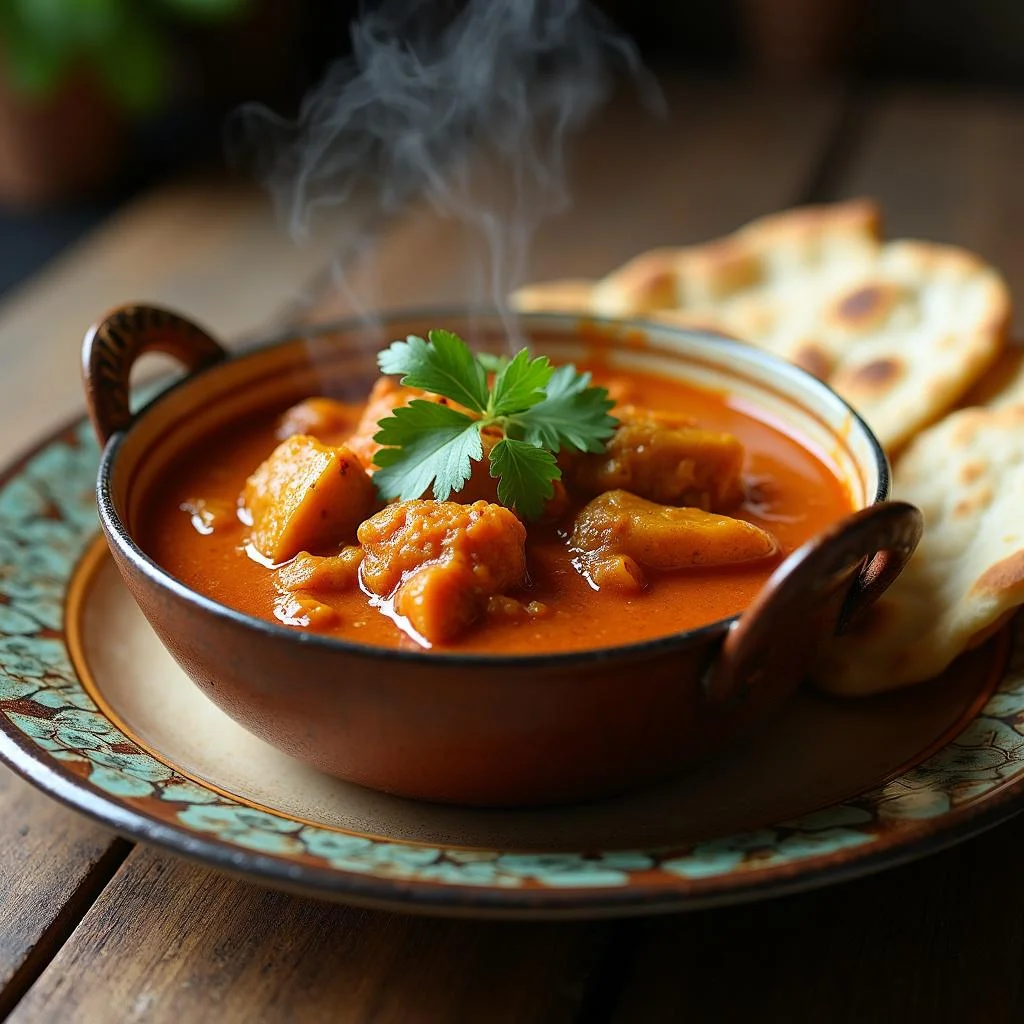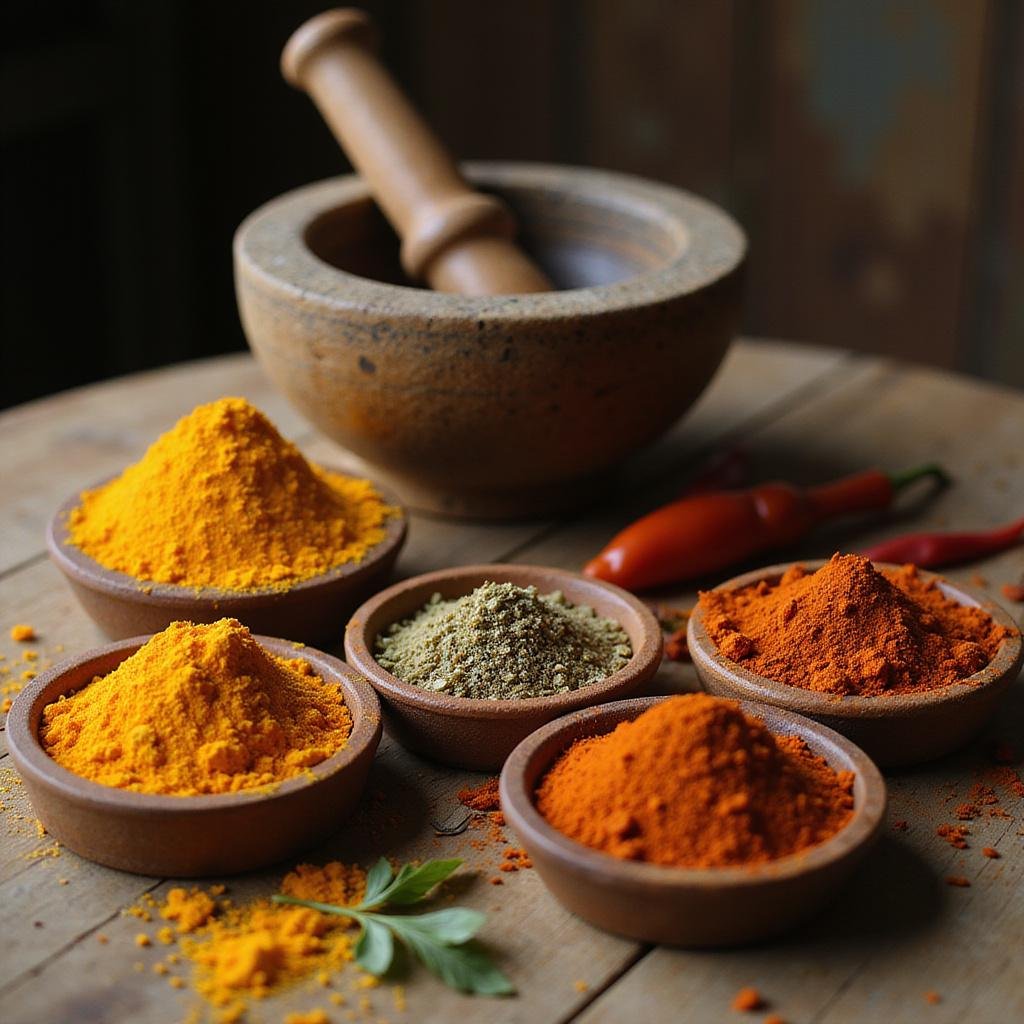1. Introduction
Indian spices are renowned worldwide for their bold flavors, rich aromas, and vibrant colors. Whether you’re a seasoned chef or a home cook, understanding the fundamentals of Indian spices is essential for creating authentic dishes that delight the senses. In this comprehensive guide, Indian spices 101 with easy curry recipe, we will delve into the most important spices used in Indian cuisine, explaining their roles and flavor profiles. Additionally, you’ll discover a simple, delicious curry recipe that you can easily prepare at home, transforming everyday ingredients into a flavorful Indian feast. Learning how these spices come together allows you to craft meals that are both comforting and complex, elevating your cooking to new heights. To make your culinary journey smoother, consider exploring useful tools like the Fullstar Vegetable Chopper and Spiralizer or the Ninja Mega Kitchen System, which streamline prep work and help you achieve perfect ingredient textures.
2. The Essential Indian Spices
Indian cooking relies on a diverse array of spices that, when combined, create a symphony of flavors. Understanding these key ingredients is crucial for authentic results. Here’s an overview of the most common Indian spices 101, essential for developing that classic Indian taste:
- Cumin seeds: These tiny seeds add warmth and earthiness; they are often toasted and used in tempering to release their rich aroma. For efficient preparation, a food chopper can help crush them for even more flavor.
- Coriander powder: This spice offers a citrusy, nutty flavor that provides brightness. It’s a staple in spice blends like garam masala and curry powders.
- Turmeric: Imparting a vibrant yellow color, turmeric also contributes a mellow, slightly bitter taste. Known for its anti-inflammatory properties, it’s an essential health-boosting spice in any Indian pantry.
- Garam masala: A fragrant blend of spices, including cinnamon, cloves, and cardamom, that adds depth to curries and rice dishes. Making your own blend at home can be rewarding; for a professional touch, check out the nonstick cookware set to ensure even heating during spice toastings.
- Chili powder: Provides heat and vibrant red color; adjust quantity based on your spice tolerance for more flavorful dishes.
- Cardamom: Known for its sweet, aromatic scent, cardamom can be used in both savory dishes and desserts, bringing a sophisticated flavor nuance.
- Mustard seeds: When fried, they release a pungent aroma and add a slightly bitter, spicy flavor that awakens the dish.
- Fenugreek: Slightly bitter with a hint of sweetness, this spice is fundamental in many Indian spice blends and dishes.
- Cloves: Warm, aromatic, and intense, cloves are used sparingly to add depth and complexity to curries and rice.
3. How to Use Indian Spices in Cooking
Mastering the timing and method of adding Indian spices is crucial for authentic flavor development. They are generally incorporated at different stages of cooking:
- Tempering: Whole spices like cumin seeds and mustard seeds are fried in hot oil to release their essential oils, which act as the flavor base of many dishes. A kitchen gadget helps toast spices evenly and efficiently.
- Grinding: Many dried spices, such as coriander or cumin, are ground into powders for a more concentrated flavor, boosting your main dishes’ authenticity.
- Simmering: During the slow cooking process, spices are added, allowing flavors to meld and deepen, giving your dishes that characteristic Indian richness.
Properly handling and combining these spices allows you to create uniquely flavorful profiles. Incorporating quality tools like a Ninja Air Fryer or a Bread Maker Machine can also inspire you to experiment with recipes beyond traditional cooking methods—perfect for busy households or adventurous cooks.
4. Easy Indian Curry Recipe
Now that you’re familiar with the core spices, it’s time to try an easy, flavorful Indian curry. This recipe is perfect for beginners and can be customized with your preferred vegetables or proteins. The vibrant color and aromatic layers of this curry make it a household favorite. To ensure your dish turns out beautifully, a quality nonstick pot and pan set will help you manage the cooking process seamlessly. Want an even easier experience? Try using a slow cooker for hands-free prep.

Ingredients:
- 2 tablespoons vegetable oil (consider a high-quality one like CAROTE Nonstick Pots and Pans)
- 1 large onion, chopped
- 3 cloves garlic, minced
- 1 tablespoon grated fresh ginger
- 2 teaspoons cumin seeds
- 1 teaspoon ground coriander
- 1 teaspoon turmeric
- 1 teaspoon chili powder
- 1 can (14 oz) diced tomatoes
- 1 can (15 oz) chickpeas, drained and rinsed
- 1 cup coconut milk or heavy cream (use the Ninja Blender for quick mixing)
- Salt to taste
- Fresh cilantro for garnish
Instructions:
- Heat the vegetable oil in a large pot over medium heat. Add cumin seeds and cook until fragrant, about 1 minute. Using a food chopper can help with prepping aromatics faster.
- Stir in chopped onions and cook until translucent, about 5 minutes.
- Add minced garlic and grated ginger, sauté for another minute.
- Mix in ground coriander, turmeric, and chili powder. Cook for 30 seconds to release their full aroma.
- Add the diced tomatoes and simmer for 10 minutes to develop the sauce.
- Stir in chickpeas and coconut milk (or heavy cream). Season with salt and adjust to taste.
- Simmer uncovered for 15-20 minutes, allowing the flavors to combine and the sauce to thicken.
- Garnish with fresh cilantro and serve hot with naan or rice. For quick and efficient side dishes, check out other ethnic dinner ideas.
5. Tips for Perfect Indian Spices & Curry
- Store spices properly: Keep whole spices in airtight containers, away from light and heat, to preserve their potency. Using a high-quality cookware set helps in maintaining temperature consistency during spice toasting.
- Toast spices before grinding: This enhances their aroma, creating a richer flavor for your dishes.
- Adjust heat levels: Customize the spiciness by modifying the chili powder. A mild or fiery curry can be achieved easily.
- Use fresh herbs: Fresh cilantro, mint, or other herbs brighten up the final dish, making it more vibrant and flavorful.
6. Frequently Asked Questions (FAQs) about Indian Spices 101 and Easy Curry Recipe
What are the basic Indian spices I need to start cooking Indian food?
For beginners, it’s best to start with cumin seeds, coriander powder, turmeric, chili powder, and garam masala. These foundational spices are versatile and form the core of most Indian recipes. To stock up efficiently, explore quality cookware and spice storage solutions.
Can I make Indian curry vegetarian?
Absolutely! Indian curries are naturally adaptable for vegetarians. Incorporate ingredients like chickpeas, lentils, assorted vegetables, and paneer that absorb spices well and create hearty, satisfying meals. A bread maker machine can help you prepare fresh bread to go alongside.
How long do Indian spices stay fresh?
Spices retain their flavor and aroma for approximately 6 months to a year if stored properly in airtight containers away from heat and light. Whole spices tend to last longer than ground versions, so consider grinding as needed for maximum freshness.
Is there a quick way to prepare Indian curry?
Yes! Using pre-ground spices, spice pastes, or spice mixes can significantly cut down preparation time while still delivering authentic flavors. For quick, healthy meals, the Ninja Air Fryer is great for quick protein and vegetable cooking.
7. Conclusion
Mastering Indian spices 101 is your first step toward creating flavorful, authentic Indian dishes in your own kitchen. With a solid understanding of how to use these spices and the simple curry recipe provided, you’re well on your way to exploring the rich culinary heritage of India. Don’t be afraid to experiment with different spice combinations and ingredients—each variation tells its own delicious story. To enhance your cooking experience and efficiently prepare ingredients, consider using helpful kitchen tools such as the Fullstar Vegetable Chopper and Spiralizer or the Home Essentials Nonstick Pots and Pans. Dive into the world of Indian cuisine and enjoy the vibrant flavors that await.


4 thoughts on “Indian Spices 101 with Easy Curry Recipe”